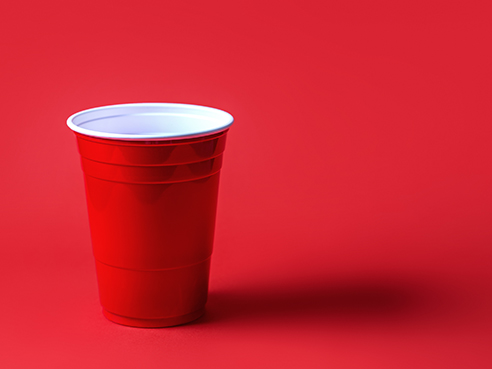 Between spring break, St. Patrick’s Day and warmer weekend weather, springtime is full of opportunities for fun with friends — and for many, that means pouring a cold drink. But knowing the safe limits for alcohol consumption is an important part of having a good time, especially when occasions for binge-drinking present themselves.
Between spring break, St. Patrick’s Day and warmer weekend weather, springtime is full of opportunities for fun with friends — and for many, that means pouring a cold drink. But knowing the safe limits for alcohol consumption is an important part of having a good time, especially when occasions for binge-drinking present themselves.
Researchers estimate that each year 1,825 young adults ages 18-24 die from alcohol-related unintentional injuries, including motor vehicle collisions, according to the National Institute on Alcohol Abuse and Alcoholism (NIAAA). And in 2015, more than a quarter of all adults in the United States reported that they engaged in binge drinking — defined as four to five drinks in two hours.
“Alcohol abuse, and binge-drinking in particular, is common around events like St. Patty’s Day and spring break, but it’s important to remember that it’s also a serious health epidemic in the United States,” said Peter Hendricks, Ph.D., associate professor in the School of Public Health Department of Health Behavior. “It’s important to understand what alcohol is, why it’s problematic and what a person can do to minimize the risk should they choose to drink.”
UAB has resources for employees and students who struggle with alcohol use or want more insights into protecting their health. Learn more about the risks of alcohol consumption and how UAB can help.
|
“Alcohol leads to impulsive decisions. While under the influence, a person may be more violent, unpredictable or sexually risky than they would be sober.” |
Understanding alcohol
How much should a person drink? Moderate drinking is considered to be one drink per day for women and two drinks per day for men, according to the NIAAA. A standard drink is a 12-oz. beer, 8 ounces of malt liquor, 5 ounces of wine or a 1.5-oz. shot of liquor.
Why should you monitor your alcohol intake? Besides the health problems excessive alcohol consumption can cause — high blood pressure, cancer, learning and memory problems and mental health problems, according to the Centers for Disease Control — Hendricks says the more immediate risks are also significant.
“Alcohol leads to impulsive decisions,” Hendricks said. “While under the influence, a person may be more violent, unpredictable or sexually risky than they would be sober.”
Beware the blackout
It’s easy to overdose on alcohol, Hendricks says — and the results can range from bad to worse.
Signs of alcohol poisoning can include confusion, vomiting, seizures, slow breathing, irregular breathing and hypothermia, but even small increases in a person’s blood-alcohol content (BAC) can affect coordination and judgment. If a person’s BAC skyrockets, blackouts or amnesia can occur.
“This can lead to things like car crashes or falls or leave a person vulnerable to violence,” Hendricks said. “Alcohol is ingrained in our culture, and binge-drinking is perceived as lighthearted and fun. It’s crucial to communicate the dire risks of binge drinking and challenge the notion that alcohol use is a normal and harmless part of the college experience.”
Minimize the risk
|
It’s crucial to communicate the dire risks of binge drinking and challenge the notion that alcohol use is a normal and harmless part of the college experience.” |
Hendricks has a few recommendations for avoiding binge-drinking and consuming alcohol responsibly and healthily, he says. The first? People under the legal drinking age of 21 should skip alcohol all together. He suggests other ways to lessen risks:
- Alternate each alcoholic beverage with a glass of water.
- Eat a full meal before drinking occasions.
- Sip drinks slowly; avoid taking shots, chugging or using a beer bong.
- Do not mix alcohol with other drugs.
- Use a designated driver or alternative transit options such as public transit, Uber or Lyft.
- Do not accept drinks from strangers.
Get help if you need it
UAB offers several options for employees, students and local citizens to manage substance-abuse issues. The Employee Assistance and Counseling Center is a one-stop shop for mental health resources, including addiction, for UAB employees. A dedicated team of certified counselors offers in-person counseling — 12 sessions per year for free — for employees and their immediate household members and a myriad other wellness events and programs, including distance counseling through Zoom for some employees.
|
“It’s important to understand what alcohol is, why it’s problematic and what a person can do to minimize the risk should they choose to drink.” |
If a student is struggling with substance abuse, Student Counseling Services (SCS), located in the Learning Resource Center, can offer support. SCS provides eCheck-Up to Go for alcohol and cannabis — self-guided educational modules and assessments that provide personalized feedback — and in-person screenings, assessments, evaluations and treatments, plus referrals to appropriate inpatient resources if necessary. See a full list of services online.
UAB’s Community Counseling Clinic offers individual, group, family, and couple and marital counseling services and accepts clients ages 8 and older. Well-trained graduate students, supervised by experienced faculty, conduct all counseling sessions. Clients are accepted through referrals from hospitals and other providers, social service directories such as 2-1-1 Connects Alabama and self-referrals. Fees are determined by income and family size and range from $5 per individual session to no more than $30 per session.
The UAB Medicine Addiction Recovery Program also offers treatment and family and support services for high-risk patients. To learn more, visit their website.
